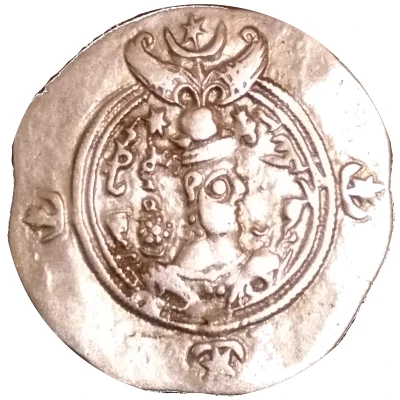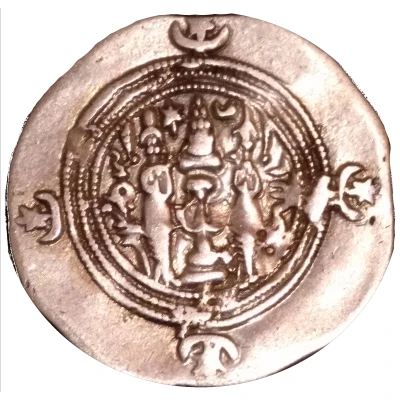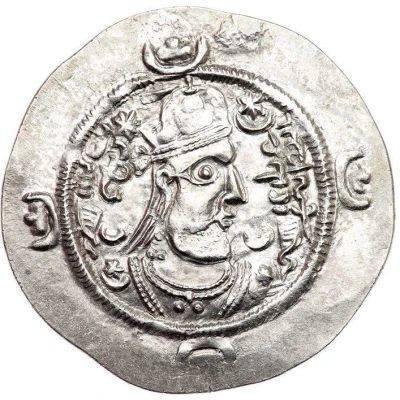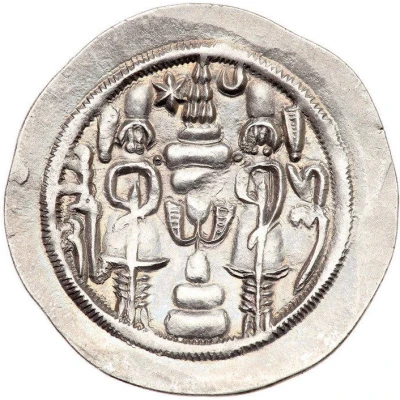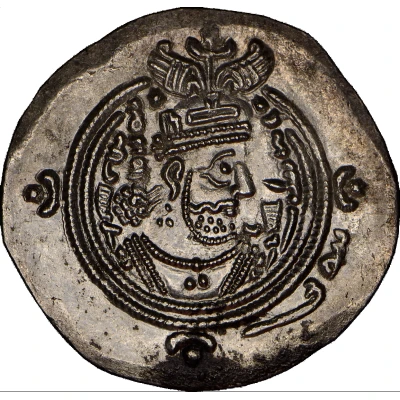
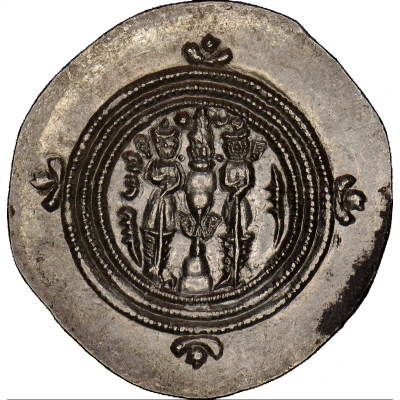

© DominusDeus (CC BY)
Drachm - Khusru II Second Reign - type IIb/3 - APD
| Silver (.999) | 4.14 g | 32 mm |
| Issuer | Sasanian Empire (Sasanian Empire (224-651)) |
|---|---|
| Emperor | Khusro II (590, 591-628) |
| Type | Standard circulation coin |
| Years | 591-628 |
| Value | Drachm (1⁄12) |
| Currency | Dinar (224 AD-651 AD) |
| Composition | Silver (.999) |
| Weight | 4.14 g |
| Diameter | 32 mm |
| Shape | Round (irregular) |
| Technique | Hammered |
| Demonetized | Yes |
| Updated | 2024-10-10 |
| Numista | N#79364 |
|---|---|
| Rarity index | 58% |
Reverse
Zoroastrian fire altar, an "atasdan" with a capitellum and plates, near which two attendants wearing high headdresses stand facing ahead, are in the hunts, with a crescent with its ends pointing upwards. The narrow part of the "atasdan" is covered by ribbons. To the left of the fire there is a star, and to the right a crescent. There is a triple rim around the picture with four crescents and stars.
Pahlavi legend: to the left - the year of his reign; to the right - the mint.
Edge
Flat hammered coin smooth edge
There are variations of diameter from 26/28/30/32 millimeters
Comment
Khurso II / 2nd reign (591-628 AD)Mint marks:
http://www.forumancientcoins.com/numiswiki/view.asp?key=sasanian%20mints
Particular:
APD-afid Brave/Praise in the margin at the bottom right
Ref:
Gariboldi 61
Göbl SN, Xusro II, IIb/3 (Plate XIII/211-215)
Göbl 214 var
http://www.britishmuseum.org/research/collection_online/collection_object_details.aspx?objectId=904056&partId=1&searchText=Khusrau+II+WYHC&images=true&page=1
SYLLOGE NUMMORUM SASANIDARUM type II/3
Interesting fact
One interesting fact about this coin is that it was issued during the second reign of Khusru II, who was the last great king of the Sasanian Empire. Despite facing numerous challenges during his reign, including wars with neighboring empires and internal political instability, Khusru II was able to maintain the empire's territorial integrity and cultural heritage. The coin's design, which features an image of the king and various symbols, reflects the cultural and religious influences of the time. Additionally, the use of silver as the material for the coin speaks to the empire's economic prosperity and trade networks.
